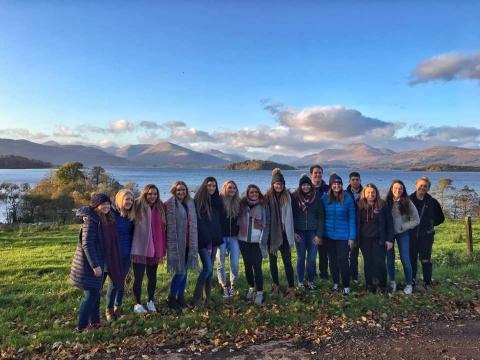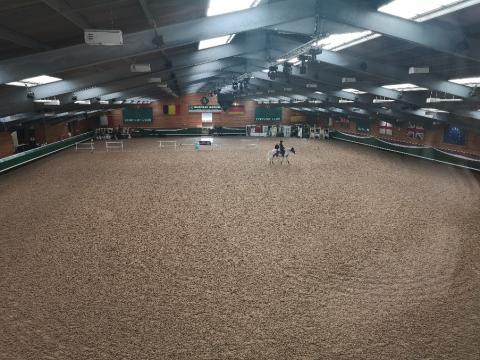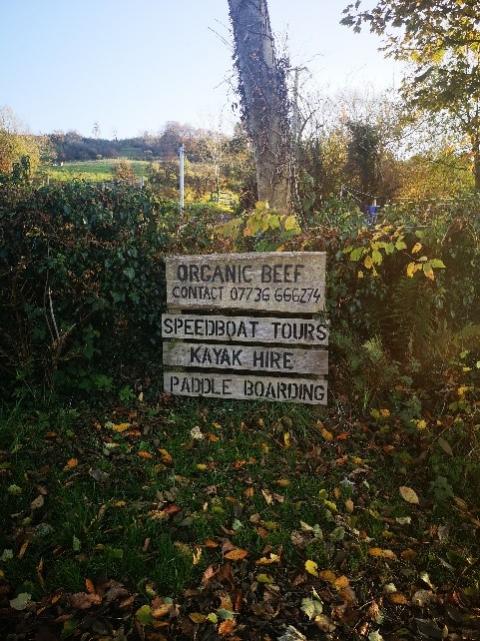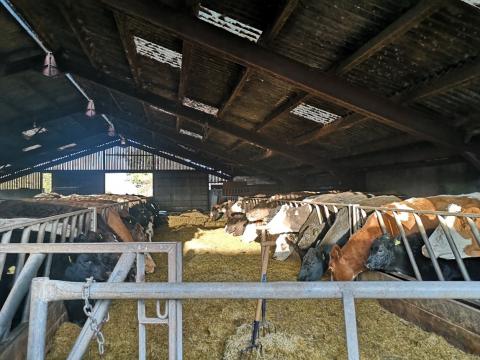Farming Connect Study Visit - Mydroilyn YFC
Mydroilyn YFC
Scotland
26 - 28 October 2019
1 Background
Having been a member of the YFC, I was keen to arrange an exchange visit for our members. Historically, Mydroilyn YFC members have not taken advantage of the travel opportunities offered by the institution, so I decided that some would be more willing to travel if we went as a club. I was aware that a club in Scotland was also keen to arrange an exchange visit, so we started to make arrangements.
Travelling to Scotland gave us an opportunity to visit businesses that have diversified in order to strengthen their agricultural businesses. Due to unforeseen circumstances, we had to rearrange one of the original visits noted in our application form.
During our visit, we completed a short questionnaire regarding our expectations for the weekend. Diversification was raised a number of times within the questionnaires. As a group, we were keen to see businesses that had successfully diversified, what had motivated them to start thinking about alternative ideas for the business, and the challenges they faced as a business.
2 Itinerary
2.1 Day 1
After setting off at 5am and travelling for around six and a half hours, we arrived at the end of our journey around 20 minutes to the west of Glasgow in the West Renfrewshire area.
After reaching the end of our journey in West Renfrewshire, we were split into groups to go to our homes for the rest of the weekend. As we were staying with members of the young farmers clubs, the majority of them lived on farms.
Heledd, Marged, Elen and myself (Gwenan) stayed at Weels beef and sheep farm. The family were milking up until four years ago, but as a result of low milk prices, they decided to give it up. The farm’s main sources of income now comes from the stock, but they also grow and sell hay to farmers far and wide.
Alaw and Catrin stayed at beef and sheep farm, Gryffe Wraes. As well as traditional farming, the business also owns a large number of lorries which brings an additional income into the business. Emma’s father, Willie Harper, is the NFU’s regional chair, and holds a number of events on the farm in order to share best practice with farmers in the area.
Angharad stayed with Bethany, who owns family company, Butchers. Following the difficult decision to give up farming, the family decided to start a butchery business in a neighbouring village.
Our first visit was arranged for that afternoon, which took us to Ingliston Country Club. Ingliston Farm was originally a small farm with a few stables, which was bought by a local family 12 years ago. Since then, they have expanded by building 200 stables and diversifying into tourism, opening a luxury hotel, wood lodges and a high-end restaurant; they also have further plans to open a large self catering glamping site. They employ around 30 local people. We will keep an eye on their social media accounts to see the developments over the next few years.
2.2 Day 2
On the second day, we visited Portnellan farm, set in a beatiful location at Loch Lomond. Portnellan has been an organic beef farm since 1991, but has now diversified into a number of different areas. They decided to venture into tourism by renovating an old farm building and transforming it into a holiday cottage. The cottage is very popular throughout the year due to the beautiful view of the Loch.
In addition, a glamping pod was built to expand further on the opportunities offered by tourism. The owner hopes to capitalise on the popularity of glamping and to expand on what is currently offered on the farm. However, he doesn’t want to rush anything, and to take his time to consider the best glamping options available to them. He is keen to establish something different to what is currently available, such as a treehouse in the woods overlooking the Loch. As we have a glamping business at home on the farm, I was very interested in speaking to the owner about this. We shared ideas and compared our social media platforms and we agreed that advertising through Facebook and Instagram is essential within any tourism business these days.
As well as the tourism aspect, the family has also made the most of the lanscape and the surrounding area by establishing a water sports enterprise on the Loch, offering speed boat trips, kayaking and more.
In addition, they also make the most of the large number of people that visit the farm by selling their own meat boxes. This is an excellent idea and I have already mentioned this idea on our own farm. I believe it could be very popular as people are keen to know exactly where their food comes from.
3 Next steps
See below some feedback received by attendees as they completed the questionnaire on their way home.
Marged Jones:
What have you learnt as a result of your visit?
As a result of our visit to Portnellan farm in particular, I learned that it is possible to diversify on a small scale without spending too much money. Portnellan had started with a glamping pod before establishing a water sports centre offering a range of activities from kayaking, speedboats and paddle-boarding. This business has made the most of the natural resources available on the farm, which is a good thing in my opinion. Our visit to the Ingliston Country Club emphasised the importance of online marketing via social media for any business. Also, the interesting thing about Ingliston Country Club was how they appealed to all kinds of people in one location. They had a building that can be used as a wedding venue or private events, and in another area, they had 200 stables, so the income stream for this business comes from all directions and is not dependant on one type of person.
What do you intend to change/add to your business following the visit?
The visit has given me the confidence to think more openly about my ideas and that anything is possible. One good example of this is Ingliston Country Club, which has gone from being a small business operated by family members only to a business that now employs over 160 staff within a period of 12 years. Although we have a Facebook page, I think we need to be more active and use it better in order to promote our business at home.
Elen Skyrme:
What have you learnt as a result of your visit?
I saw the similarity between beef and sheep farming practices between Scotland and Wales. The dairy industry seems to be being left behind with only 3 dairy farms remaining in Renfrewshire, and beef farming is going from strength to strength, mainly due to the latitude. Many farms had chosen to diversify in different ways that suit them. One former dairy farm had turned to organic beef farming, holiday cottages, glamping and water sports and another had established a ‘Country Club’ and a very successful equine centre. The particular farm we visited had also diversified into setting up a successful fencing company which makes metal crash barriers, and also has 13 biomass boilers across 3 sites.
What do you intend to change/add to your business following the visit?
I would like to consider using different farming methods across the farm as well as looking at ways in which diversification can be implemented on the farm. Perhaps we could sell meat boxes off the farm as we say on the organic beef farm in Scotland.
Heledd Besent:
What have you learnt as a result of your visit?
I saw how a dairy farm has diversified and built a biofuel and fencing business. It was interesting to see how both businesses work together and how the farm had successfully changed direction with within less than 10 years. They also showed us the steps they were intending to take next, along with the sources of support available to them. It was also interesting to see how the farm at Loch Lomond had diversified on a smaller scale. Something like this would be more realistic for us as our farm is within the national park, and so gaining permission to make some changes can be challenging.
What do you intend to change/add to your business following the visit?
Look into the support and funding sources available to diversify in ways that I wouldn’t have considered previously.




